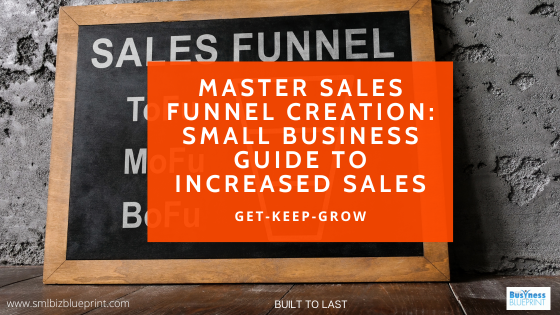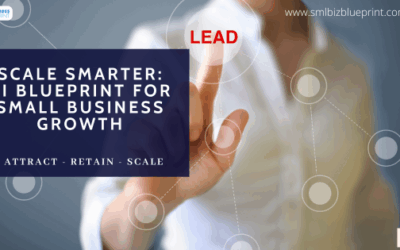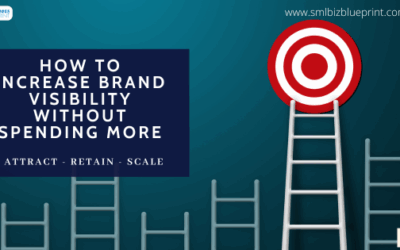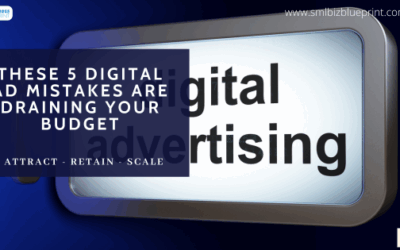In today’s competitive business landscape, small and medium-sized enterprises face the constant challenge of attracting customers and converting these interactions into lasting relationships.
The key lies in an effectively crafted sales funnel – a no longer desirable strategy but essential for sustainable growth and customer loyalty.
Why is a sales funnel so crucial for your SME?
It’s simple: a well-structured funnel maps out your potential customer’s journey from the first point of contact to the final sale and beyond.
It’s a strategic process that nurtures potential leads through various stages of engagement, building trust, establishing your authority, and, ultimately, fostering a sense of loyalty beyond a mere transaction.
But how do you create a sales funnel that attracts and retains?
This guide is your comprehensive answer. Rooted in the strategy of preeminence, we’re not just discussing sales tactics; we’re delving into establishing your business as the foremost expert and trusted advisor in your niche.
This approach ensures that your sales funnel doesn’t merely end with a purchase but cultivates an ongoing relationship, turning customers into advocates for your brand.
Sign up for our newsletter to stay ahead in your industry with more insights and strategies.
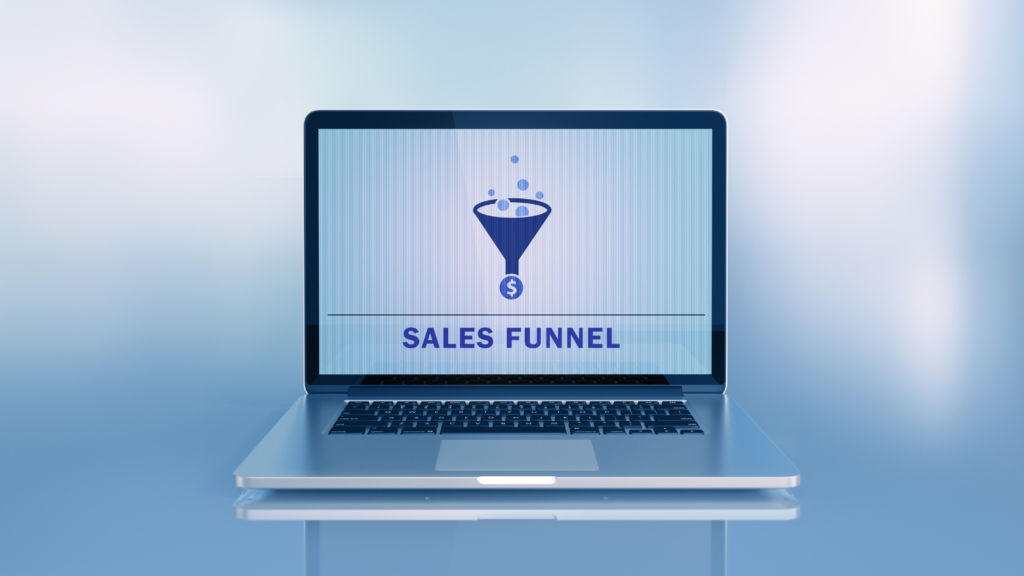
Understanding Sales Funnels
A sales funnel consists of several key stages: Awareness, Interest, Decision, and Action – often abbreviated as AIDA. But let’s break these down further, making each stage relevant to your SME.
Awareness: This is the stage where potential customers learn about your business. It’s about making your presence known in a crowded marketplace. Whether through social media, content marketing, or word-of-mouth, your goal is to put your brand on your customer’s radar.
Interest: Once you’ve captured their attention, it’s time to stoke the flames of interest. This is where you provide value, educate your audience about your products or services, and position your business as the solution to their problems.
Decision: Here, potential customers are considering whether to make a purchase. It’s your job to nudge them towards a positive decision, using tactics like persuasive copy, testimonials, and compelling offers.
Action: The final stage, where interest turns into action – a purchase. But for a business, the action stage is not the end but a new beginning. It’s about continuing the relationship post-purchase, ensuring customer satisfaction, and nurturing them into repeat customers and brand advocates.
Each stage requires a tailored approach, ensuring that your business is not just selling a product or service at every point but offering a solution and building a relationship.
Step 1: Identifying Your Target Audience
Understanding who your customer is marks the starting point of an effective sales funnel. It’s not just about demographics but delving into the psychographics of your audience.
This involves grasping their motivations, challenges, and what truly drives their decision-making processes.
Market Research and Data Analysis:
Begin with in-depth market research. Utilise tools and resources to gather data about your potential customers. Surveys, focus groups, and customer data analysis can provide valuable insights into who your audience is and what they need.
Creating Buyer Personas:
With this information, create detailed buyer personas. These are semi-fictional representations of your ideal customers based on real data and educated speculation about customer demographics, behaviour patterns, motivations, and goals.
You can tailor your marketing efforts more effectively by identifying your target audience. This step ensures that your sales funnel is not a broad net but a precision tool designed to attract and engage the most valuable leads for your business.
Understanding your target audience also allows you to communicate in a way that resonates with them. It’s about speaking their language, addressing their problems, and presenting your business as the solution they’ve been searching for.
By truly understanding and empathising with your audience, you position your business not just as a vendor but as a trusted advisor and the go-to expert in your field.
Step 2: Creating Awareness
The top of the sales funnel is about visibility and making a memorable first impression. You engage potential customers by making them aware of your business and what you offer.
But it’s not just about getting noticed; it’s about getting noticed for the right reasons.
Content Marketing:
One of the most powerful tools at this stage is content marketing. Create valuable, relevant content tailored to your audience’s interests and needs. This could include blog posts, infographics, videos, and social media content that educates, informs, and entertains. For example, if you’re a software SME, share articles about industry trends, tips, and how-to guides related to your product.
Search Engine Optimization (SEO):
Optimise your online content for search engines. Use keywords strategically but naturally, ensuring your content ranks higher in search engine results, making it easier for potential customers to find you.
Social Media and Online Presence:
Establish a strong online presence. Use social media platforms to share your content, engage with your audience, and build a community around your brand. Tailor your approach to each platform to maximise its unique strengths.
By providing valuable content and optimising your online presence, you attract potential customers to your business. This stage is crucial for establishing your business as an authoritative, trusted source of information and solutions in your industry, aligning perfectly with the strategy of preeminence.
Step 3: Generating Interest
Once awareness is established, the next crucial phase is generating and maintaining interest. This is where you deepen the relationship with potential customers by educating them about how your products or services can solve their problems or fulfil their needs.
Educational Content:
Your content here should be more in-depth. Think webinars, detailed blog posts, e-books, and case studies that showcase your expertise and the benefits of your offerings.
Email Marketing:
Utilise email marketing to nurture leads. Send regular newsletters that provide valuable insights and keep your audience engaged. Personalise these communications as much as possible to create a connection and show your leads that you understand their specific needs and challenges.
Engaging with Feedback:
Actively engage with feedback and inquiries from your audience. This interaction shows that you value their input and are dedicated to providing solutions, reinforcing your position as a trusted advisor.
By educating your prospects and providing them with valuable resources, you’re not only holding their interest but also building trust and credibility. This phase is essential in the strategy of preeminence as it demonstrates your commitment to adding value to your customers beyond just making a sale.

Step 4: Facilitating Decision Making
In this phase, your potential customers are considering whether to purchase. Here, your focus is on converting their interest into a decision to buy. This is where your persuasive skills, combined with a deep understanding of your customer’s needs, come into play.
Demonstrations and Trials:
Offer product demonstrations or free trials. For example, a software SME might offer a 30-day free trial of their product. This showcases the value of what you’re offering and reduces the risk for the customer.
Testimonials and Reviews:
Share customer testimonials and case studies. Positive reviews from other satisfied customers can be incredibly persuasive and help to alleviate any concerns or doubts.
Special Offers and Incentives:
Limited-time offers, or special discounts can provide that final nudge towards a purchase. However, ensure these offers align with the value proposition of your product or service.
This stage is about more than just closing a sale; it’s about reinforcing the trust and authority you’ve built up to this point. You aim to convince your leads that choosing your product or service is not just a good decision but the best decision.
Step 5: Driving Action
The bottom of the funnel is where the journey culminates in action, typically a purchase decision. Here, your efforts focus on facilitating a seamless and compelling conversion process.
Streamlined Purchasing Process:
Ensure that the buying process is as straightforward and hassle-free as possible. This could involve optimising your website’s checkout process, providing multiple payment options, or offering clear, concise product information.
Strong Calls-to-Action (CTAs):
Use clear and compelling CTAs to guide your prospects towards making a purchase. For instance, phrases like “Start Your Free Trial Now” or “Get Your Customized Solution Today” can be effective.
Personalisation:
At this stage, personalisation can make a significant difference. Tailoring your communication based on the prospect’s previous interactions with your brand can increase the likelihood of conversion.
This is the moment where all your nurturing efforts pay off. A smooth conversion process reaffirms your customer’s trust in your brand, showcasing your commitment to providing a positive experience.
Step 6: Fostering Loyalty and Repeat Business
After the sale, the focus shifts to turning one-time buyers into repeat customers and loyal brand advocates. This stage is critical for sustainable growth and builds upon the preeminence strategy by deepening the relationship beyond the initial sale.
Post-Purchase Engagement:
Engage with customers after their purchase. Follow-up emails, customer satisfaction surveys, and invitations to exclusive events effectively show customers that you value their business.
Loyalty Programs:
Consider implementing a loyalty program that rewards repeat purchases or referrals. This not only incentivises repeat business but also makes customers feel appreciated.
Continual Support and Education:
Provide ongoing support and resources. For a tech SME, this might include access to a help centre, regular updates about new features, or advanced training sessions.
This stage cements the relationship you’ve built with your customers. Continuing to provide value post-purchase increases the likelihood of repeat business and turns your customers into advocates for your brand.
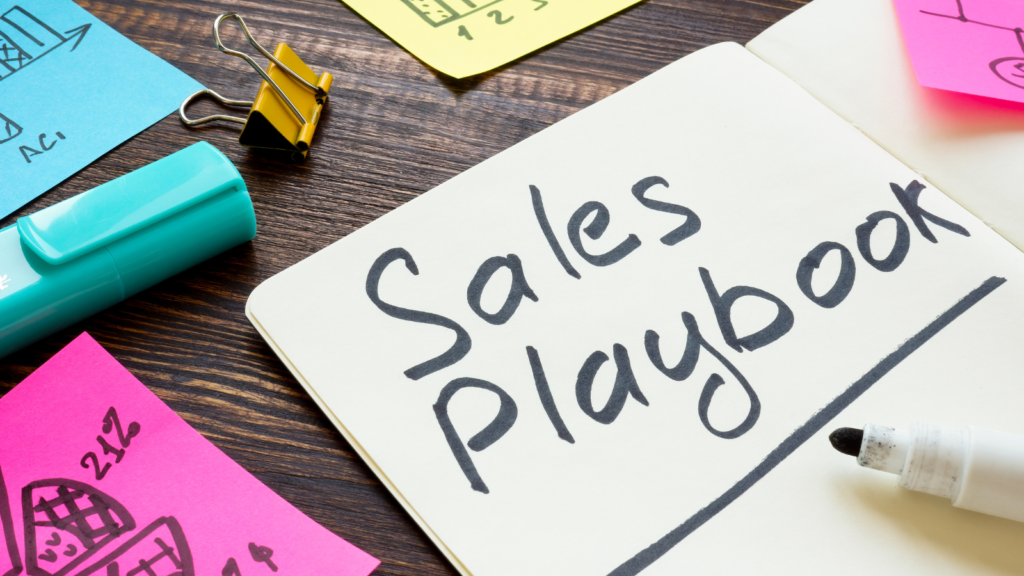
Top Priorities
In-depth Understanding and Identification of the Target Audience:
This is foundational for any effective sales funnel. SMEs must conduct thorough market research and create detailed buyer personas. Understanding your audience’s needs, preferences, and pain points is crucial for tailoring your marketing efforts and ensuring each stage of your sales funnel resonates with them.
Creation of Valuable, Relevant Content at Each Funnel Stage:
Content is king in every stage of the sales funnel. From raising awareness with engaging blog posts and social media content to nurturing leads with in-depth guides, webinars, and case studies, the content should be designed to educate, inform, and convince the audience. This builds authority and trust and effectively guides potential customers through each stage of the funnel.
Consistent Engagement and Optimization Post-Purchase:
The end of the sales funnel is just the beginning of the customer relationship. Implementing strategies for post-purchase engagement, like follow-up communications, customer satisfaction surveys, and loyalty programs, is vital. This ongoing engagement helps foster loyalty, encourage repeat business, and turn customers into brand advocates. Additionally, continual optimisation of the sales funnel based on feedback and performance metrics ensures its effectiveness and relevance over time.
Unique Enhancements
Leverage Storytelling in Your Marketing:
Beyond traditional informative content, incorporating storytelling can be a powerful tool. Share real stories about your brand, customer experiences, or even behind-the-scenes glimpses into your business. This approach can create an emotional connection with your audience, making your brand more relatable and memorable. For instance, narrate the journey of a customer problem and how your product or service provided a unique solution, focusing on the human aspect rather than just the transaction.
Utilise Interactive Content:
Interactive content, such as quizzes, polls, infographics, or calculators, can significantly increase engagement. For example, a financial SME could offer an interactive budget calculator on their website. This type of content provides value to the user and encourages active participation, which can lead to higher engagement and stronger interest in your offerings.
Incorporate Gamification Elements:
Introducing gamification in marketing efforts, such as rewarding customers for certain actions (like referrals, social media shares, or completing a series of educational content), can boost engagement and foster brand loyalty. This could be as simple as a points system, badges, or leaderboards. For SMEs, especially in sectors like e-commerce or tech, such gamified experiences can create a more dynamic and enjoyable journey for customers, encouraging continued interaction with your brand.
Creating a winning sales funnel is a comprehensive process beyond a simple transaction. It’s about understanding and connecting with your audience, guiding them through awareness, interest, decision, and action, and then continuing to nurture that relationship post-purchase.
Remember, a sales funnel is a dynamic entity constantly evolving with your business and market. Regular analysis, adaptation, and optimisation are key to maintaining its effectiveness.
Your journey towards sales funnel mastery is an ongoing process. Embrace each step, continually strive for improvement, and watch your business grow and thrive in the competitive business landscape.
Ready to elevate your business with a tailored sales funnel strategy? Book a consultation with our experts today and take the first step towards transforming your SME’s future. Access Here
FAQs:
Q1: What are the key stages of a sales funnel?
A1: The sales funnel stages include Awareness, Interest, Decision, and Action, each playing a critical role in guiding the customer journey.
Q2: How can I effectively identify my target audience?
A2: Conduct market research, analyse customer data, and create detailed buyer personas to understand and connect with your target audience.
Q3: What strategies can I use to create awareness about my brand?
A3: Utilize content marketing, SEO, and social media engagement to make your presence known and establish your brand as a credible authority.
Q4: How do I turn interest into actual sales?
A4: Offer compelling content, personalised communication, and persuasive CTAs, and ensure a seamless purchasing process to convert interest into sales.
Q5: What are the best ways to foster customer loyalty post-purchase?
A5: Engage with customers through follow-up communication, provide ongoing support, and consider implementing loyalty programs.
Q6: How often should I review and optimise my sales funnel?
A6: Regularly review and adjust your sales funnel to align with customer feedback, market trends, and business objectives.
Q7: Can a sales funnel help in building long-term customer relationships?
A7: Absolutely. A well-structured sales funnel is key to acquiring customers, nurturing lasting relationships, and turning customers into brand advocates.
Other Articles
Maximising Marketing Spend: Small Business Strategies for Success
Boost Your Small Business: Effective Data-Driven Decisions Unveiled

